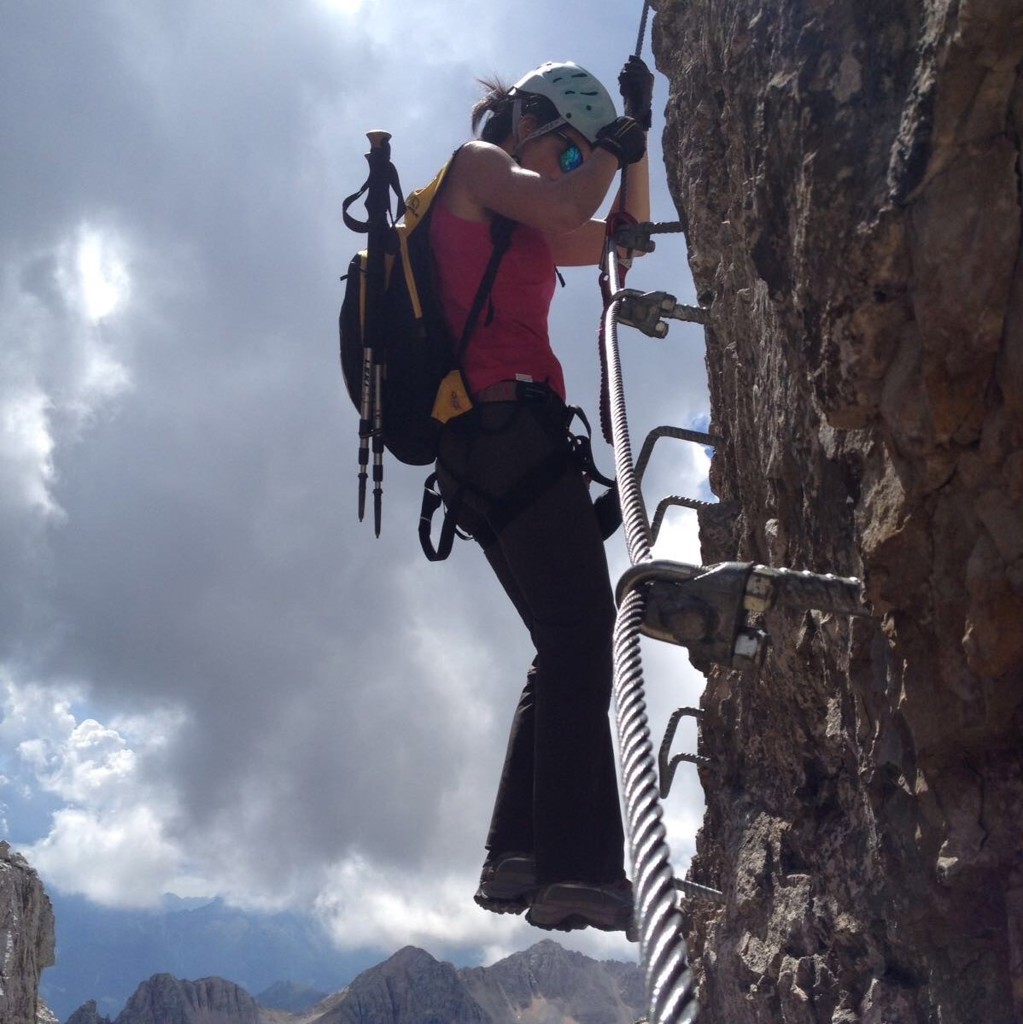Francesca Calegari
Deutsches Elektronen Synchrotron, GermanyFor major contributions to attosecond science.

“Light is one of the most fascinating things,” says Francesca Calegari, “Light is life, light is energy.” It is clear that she has a passion for light that goes beyond a job or research interest. She has built her career by following her inspirations, and is now an important contributor in the science of light.
Francesca vividly remembers using a toy microscope she received as a Christmas gift to examine an onion skin with her mother, who was a biologist. This sparked an early interest in science, though she explored other passions throughout high school. She was enthusiastic about art and art history, and always felt this interest was complimentary to science. In choosing what to do for a career, Francesca changed her mind many times before deciding to pursue science.
Throughout her career, Francesca has never had just one true mentor. Instead, she relied on multiple people who helped guide her along the way. Today, she serves as the Director of Equal Opportunities at the University of Hamburg, where she mentors female scientists. She comments, “I feel very satisfied when I see that my mentee is profiting by my mentoring,” emphasizing the importance of such programs. Francesca has a wealth of success stories, leading young female scientists through their “fog” and helping them find their way. Her advice is, essentially, threefold: Follow your dreams, find a good environment, and make yourself visible. In order to follow your dreams, “you should go beyond all the obstacles and difficulties that you see ahead.” You need a good environment with “a lot of stimuli and good mentor in the group…a good supervisor.” Becoming visible requires support and the tenacity to seize opportunities: “People have to remember you and what you did. You should present at and attend as many meetings and conferences as you can, and be sure to network and discuss your work with lots of people.”
The society has played a role in helping her gain visibility - her first conference was CLEO/Europe 2007 in Munich, where she presented an oral contribution. This was an exciting opportunity for her as a young student. Now, she continues to attend meetings, but she also publishes frequently. Optics Letters is at the top of her list. In her rapidly developing field, she also reads other society journals to stay on top of the latest research. For her students, she encourages participation in Student Chapters, technical groups, and taking advantage of the many new webinars. Reflecting on her relationship to the society, she says “it has been very important, and that is why I am really honored to have been elected to Fellow.”
When she’s not mentoring students, Francesca does research in the field of ultrafast science, specifically attosecond science. In her work, she investigates the ultrafast physical phenomena triggered by light in matter. She describes it like “trying to make a movie of the dynamics of matter.” In her laboratory attosecond pulses (1 as =10^-18 s) are generated, these ultrafast light transients allow her to “play” with the electrons, moving and manipulating them around a molecule. “There are several possibilities that we are emphasizing with the use of such ultrashort pulses, and it’s very fascinating that we can really watch and freeze…matter at the very first instants of the light-matter interaction.” She adds, proudly, “We have the fastest camera available to take these pictures.” She is known for her discovery of charged migration in biologically relevant molecules, such as amino acids. “Aromatic Amino Acids are considered the nano-sized antenna of proteins as they can very efficiently capture the light…we work with these nano-sized antenna in which we trigger a process dubbed charge migration, which means that the electrons migrate from one end to another of the molecular backbone.” In their experiment, they observed the electrons migrating between two functional groups of the amino acid phenylalanine, the first observation of electron dynamics in a biologically relevant molecule. She comments, “this was the first proof that we can watch electron moving in a large molecule and we might be able soon to control their motion to achieve new functionalities…” Not only was this important for her career, but also for advancing the field of ultrafast science.
Photo Credit: Francesca Calegari
Profile written by Samantha Hornback
